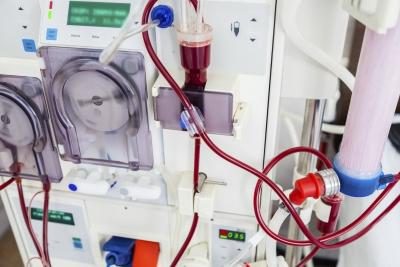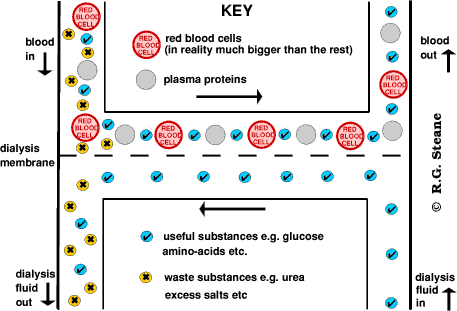What is kidney dialysis?

Kidney dialysis a process that is used to replace a disfunctional kidney. It helps the blood filter out toxins, electrolytes (dissolved minerals) and metabolytes (waste products created when cells use energy). In addition to this kidney dialysis helps the body maintain stable amounts of sodium, calcium and potassium.
How does kidney dialysis relate to diffusion?
Kidney Dialysis is centered around a thin semi-permeable membrane that allows small particles such as water, electrolytes and metabolytes pass through, but prevents proteins, and blood cells from passing through. This membrane seperates a person's blood and a solution called the dialysis solution which contains little to no toxins, electrolytes or metabolytes which therefore follow the concentration gradient and flows from the blood to the dialysis solution. The solution is continually replaced and thus prevents a state of equilibrium and maintains a low amount of toxins, metabolytes and electrolytes allowing the process to continue.

How does kidney dialysis relate to selective permeability?
Kidney dialysis is centered on the concept of a selectively permeable membrane. The membrane that the dialysis uses is selectively permeable as it lets essential minerals and proteins to remain in the blood while letting toxins and waster products through the membrane.
Is kidney dialysis an example of active or passive transport?
Kidney dialysis is an example of passive transport. The membrane allows small particles such as the toxins and waste products found in blood to pass through and since the dialysis solution is actively being replaced the particles will naturally pass through the membrane through diffusion.